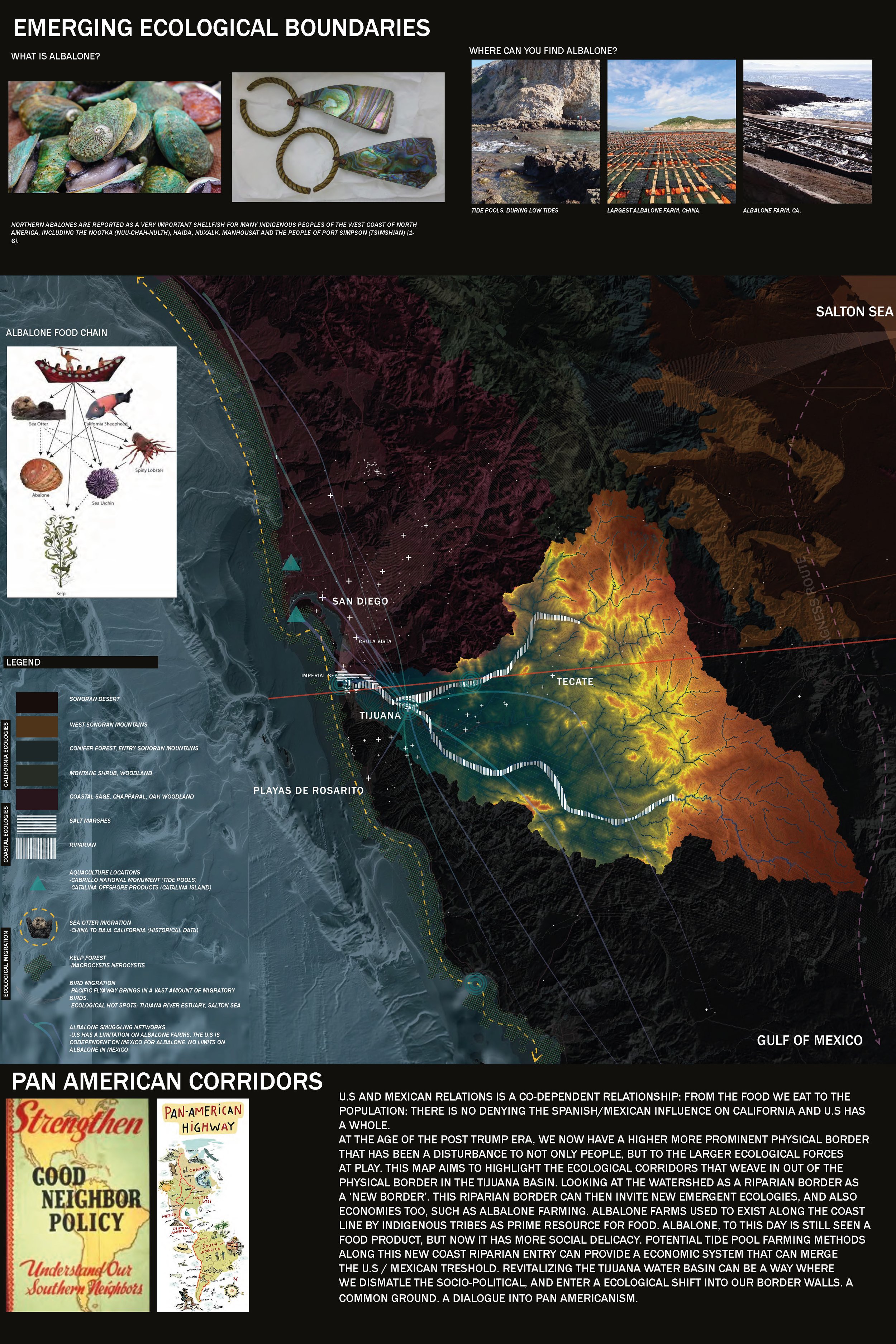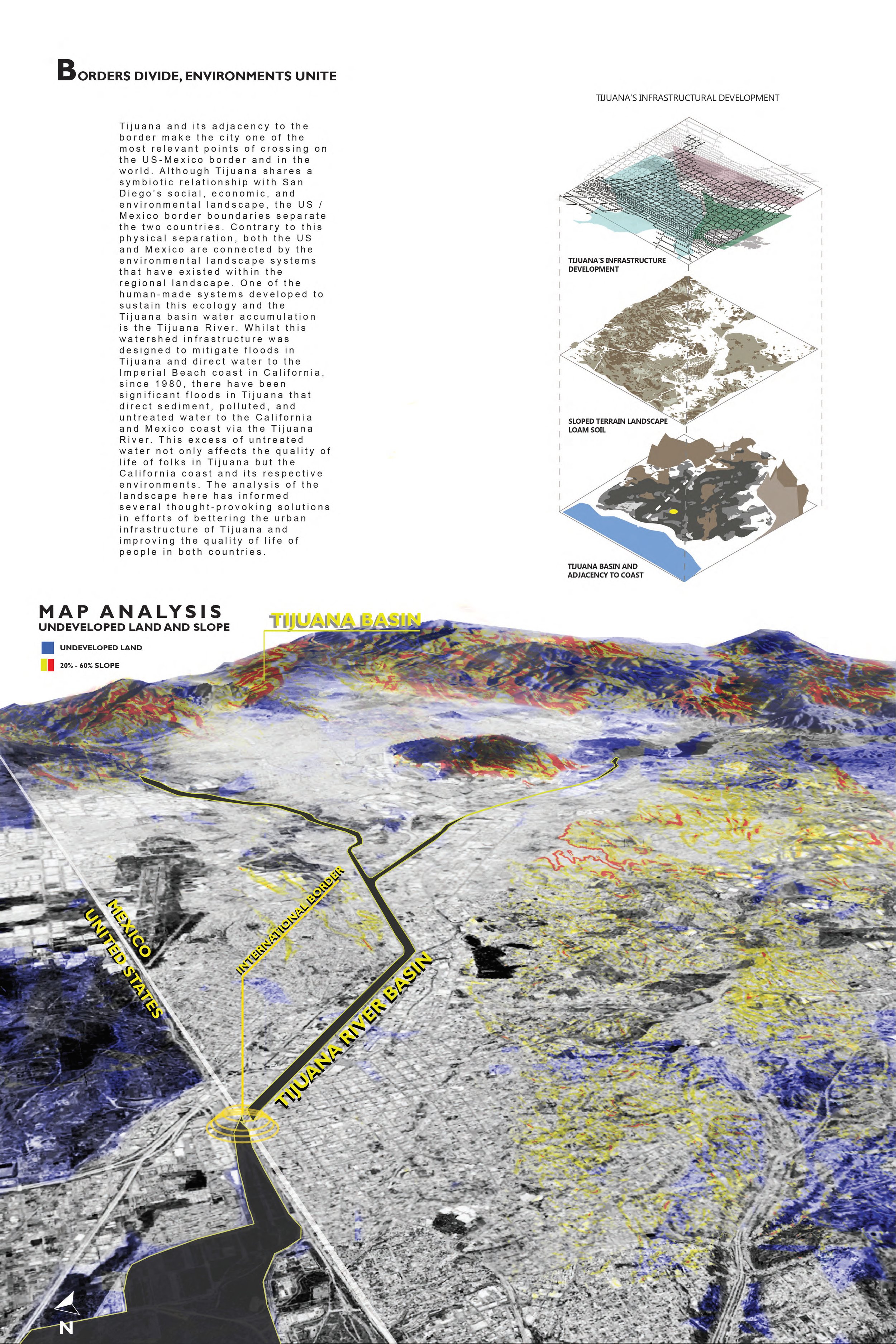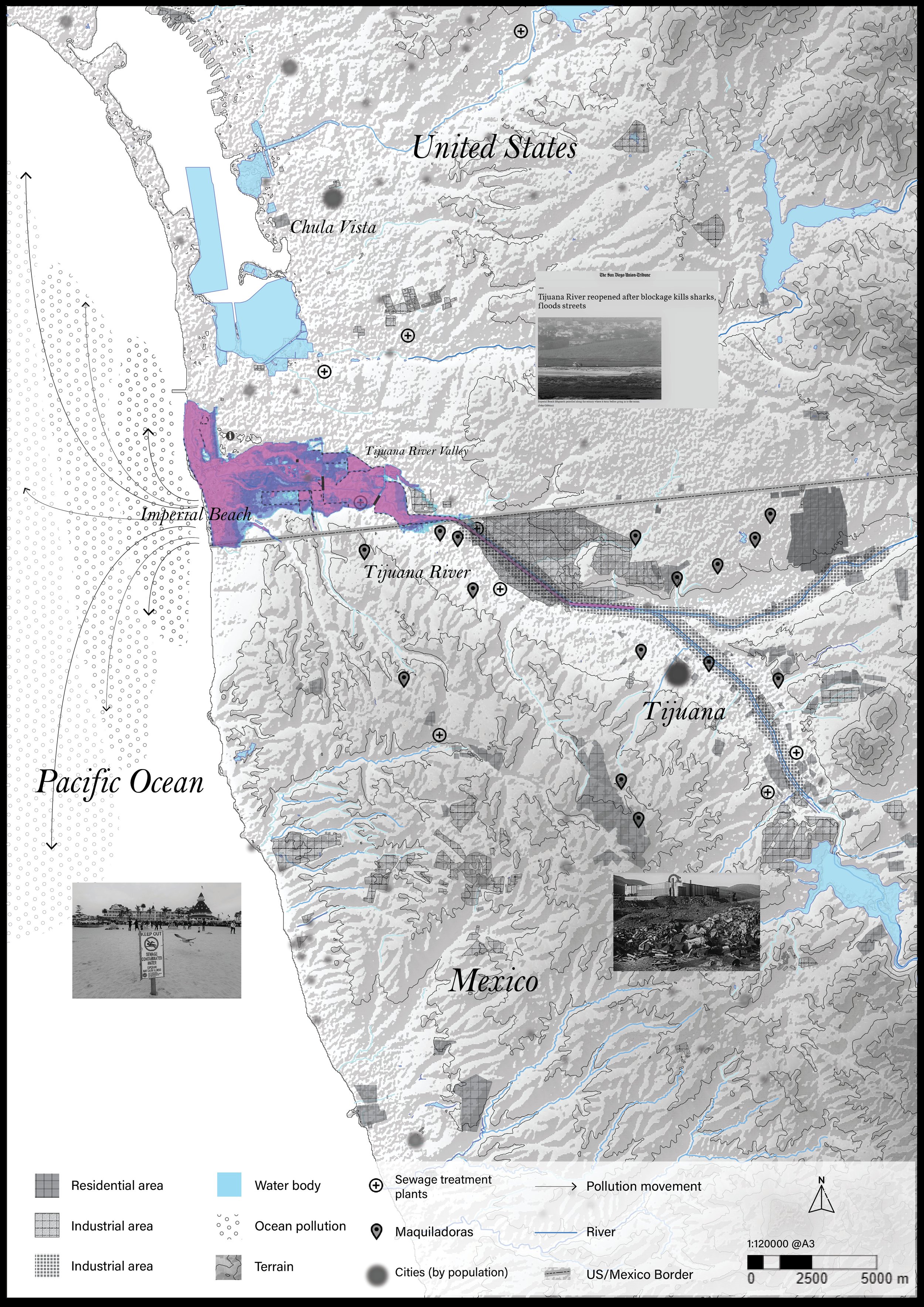AAVS_Transborder Landscapes further examines the Tijuana River juxtaposed between the two countries, a Transborder Landscape. The two cities face contrasting economies, cultures, and policies, despite the shared landscape composed of arid plains, many channelized rivers, hillsides, climate, natural resources, and natural disasters. Through the dual management and geopolitics behind the Tijuana River landscape, the existing river currently faces ramifications of contaminated waters and unstable lands due to the mismanagement of the Tijuana River. This dual management led to the demise of the river landscape because of largely opposing agendas of the river between the two nations. In some cases, those who face economic hardships, migrate across the Tijuana River in hopes of the American dream. Those who cross the river experience high exposures to contaminants, risking one’s health for economic prosperity in the United States.
In response to the socio-economic impact the landscape poses, AAVS_Transborder Landscapes looks at the Transborder Landscape, an interface between San Diego and Tijuana, as a way to inform policy through design interventions, cartography, and agency through the local communities. The course will look at the geomorphological process of the region and the methods in which each country manages the river. The stark differences between the two countries will be examined at the local level and the socio-economic impacts it poses through its landscape.






